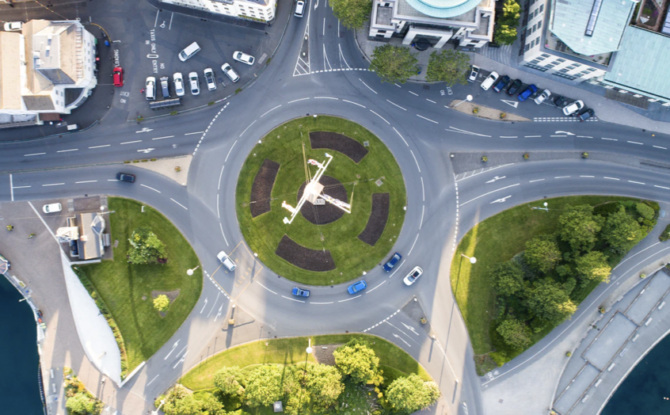
Circular Intersection Basics
From CyclingSavvy.org
by
This article introduces the topic of circular intersections, also called traffic circles, rotaries, and roundabouts. There is a detailed description of them on Wikipedia.
I hail from Massachusetts, which is notorious for its circular intersections — called rotaries here. Most date back to the early decades of the 20th Century. A few are modern roundabouts, with entries and exits that deflect and slow motor traffic.
This article will cover the basics of riding a bicycle through a small rotary. We’ll deal with complications later.
Mastering a small circular intersection
You can think of a circular intersection as a one-way street wrapped around into a circle, with T intersections from the outside of the circle. At a T intersection, entering traffic yields to traffic on the top bar of the T. This rule is especially important in a circular intersection. If traffic in the circle had to yield, it would pile in but couldn’t keep moving: instant traffic jam!
Be glad that you are a bicyclist as you approach a circular intersection. Bicycle drivers have a much easier time than pedestrians with these intersections. The secret of success? Stay away from the outside edge. If you are at the edge, drivers entering the circle have to turn their heads sharply to see you. Exiting vehicles go nearly straight and do not have to slow down much. Keep far enough toward the inside to allow motorists to enter and exit to and from your right side. Because there are no entrances or exits at the inside, then no vehicles will cross your path. I have sometimes demonstrated this by riding two or more times around a rotary before exiting!
Photo by Enrapture Captivating Media on Unsplash
